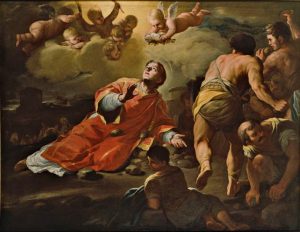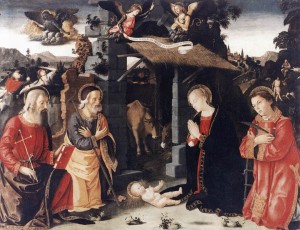The 2015 Winter Ember Days are December 16th, December 18th, December 19th.
 What are the Ember Days?
What are the Ember Days?
The venerable observance of the Ember Days, Quatuor Tempora, in Latin, ought to be kept today by Catholics for no other reason to remain in the gesture of gratitude before God. Sadly, however, the Ember Days are sort of defunct in the Catholic Church, generally speaking. There are people in small portions of God’s Kingdom who maintain the liturgical and personal remembrance of what God has done through the beauty of His creation.
The Ember Days were days of fast with partial abstaining from meat as a form of penance. Remembering that fasting was always linked to prayer of giving thanks God for the gifts in nature and asking for the grace of being humble and moderate in our stewardship and use of nature. Likewise, fasting and prayer was linked with an act of charity.
The fasts for Ember Days are known as “Jejunia quatuor temporum,” (“the fast of the four seasons,”). The biblical warrant is Jewish practice of fasting four times a year:
Thus says the Lord of hosts: The fast of the fourth month, and the fast of the fifth, and the fast of the seventh, and the fast of the tenth shall be to the house of Judah, joy, and gladness, and great solemnities: only love truth and peace (Zachariah 8:19).
The Jewish sensibility ought to be ours: prayer, fasting and charitable works to be done with joy and gladness. Sour and cynical people go home! Also, someone might quip that that the Ember days came before the post-modern obsession with ecology divorced from the Divine Majesty. True. So let’s bring the integrity of the Jewish and Catholic faith back to its robust nature!
We know historically that, The Didache, a first century text, speaks of the Christians fasting on Wednesdays (the day on which Jesus was betrayed by Judas) and on Fridays (the day on which Jesus was crucified) to differentiate from the Jewish custom of fasting on Tuesdays and Thursdays. In time the central tradition of the Church at Rome kept the fast only Fridays as a penitential day except during Eastertide. Yet, in monasteries you will find to this day the retention of Wednesday, too, as a day of penance. Nevertheless, by the third century the Ember days were born.
The first of these four times comes in Winter, after the the Feast of Saint Lucy (December 13) ; the second comes in Spring, the week after Ash Wednesday (date varies) and the third comes in Summer, after Pentecost Sunday (date varies); and the last comes in Autumn, after Holy Cross Day (September 14).
Their dates can be remembered by this old mnemonic:
Sant Crux, Lucia, Cineres, Charismata Dia
Ut sit in angaria quarta sequens feria.
Which means:
Holy Cross, Lucy, Ash Wednesday, Pentecost, are when the quarter holidays follow.
Simply recalled: “Lucy, Ashes, Dove, and Cross.”
An interesting note: by AD 494 Pope Gelasius designated Ember Saturdays as the day to confer Holy Orders. The tradition of the very early Church had the discipline that ordinations be preceded by fast and prayer (see Acts 13:3).
Here is a good article to read on the Ember Days.
 Today is the feast of Saint Stephen, whose name means “crown,” and the first disciple of Jesus to be a martyr. Saint Stephen was the first deacon of our Church; the apostles discerned that they needed assistants to look after the care of the widows and the poor. As you know from the Acts of Apostles, seven deacons were selected by prayer and ordained for service.
Today is the feast of Saint Stephen, whose name means “crown,” and the first disciple of Jesus to be a martyr. Saint Stephen was the first deacon of our Church; the apostles discerned that they needed assistants to look after the care of the widows and the poor. As you know from the Acts of Apostles, seven deacons were selected by prayer and ordained for service.



